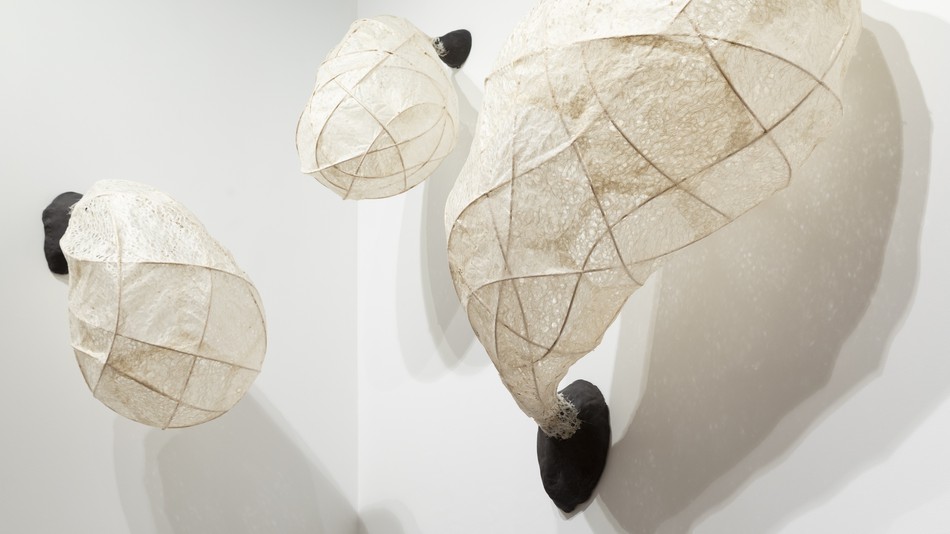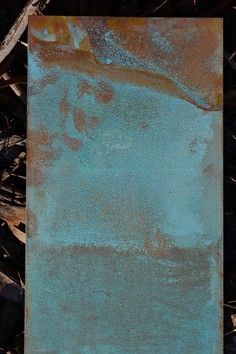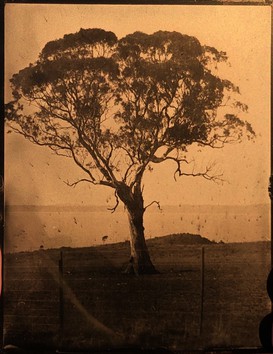Artist insights: Julie Monro-Allison
Interview with the artist on method, materials and more
1 jul. — 8 aug. 2022
Artist insights: Julie Monro-Allison
Interview with the artist on method, materials and more

1 jul. — 8 aug. 2022
Artist insights: Julie Monro-Allison
Interview with the artist on method, materials and more
1 jul. — 8 aug. 2022
Q. How did you come to art? and what made you want to become an artist?
A. When I was growing up I did lots of sewing and textile projects, and I was interested in woodwork too. I grew up in a small town. Finding a bunch of rusted metal near the creek bed one day. Deciding to make some art with one of the pieces is my first memory of wanting to make art. I studied art history at university and because I transferred institutions halfway through I needed to take extra units in my final year to complete my degree. So I decided to do some art classes. Making art was challenging but also interesting and satisfying, and it was really clear that that was what I wanted to do, so I decided to enrol in art school.
Q. You use a wide range of materials in your practice, including cane, glass, cotton, silk, ink and cement. Can you tell us about your interest in materials – what draws you to them? Why were you interested in using cane and washi paper in your new work Skeleton breath?
A. There are so many elements to consider when making decisions about materials. If and how the material supports what the work is aiming to address is important; for example its existing or possible connotations and associations. Aesthetic qualities are equally important, the structural properties for sculptural work, if it is a material that complements my technical skill set, and its availability. An important consideration for me is the environmental impact of the materials I use, and so I do tend to use organic materials such as paper and cotton, and to reuse materials from one work to the next.
I have been using washi paper and cane for a couple of years now. Skeleton breath is the first work I’ve made combining this particular sort of cane and washi paper. When I started using these materials, the pieces I was working on started to make sense, to come together, and become more resolved. I feel there is so much more to explore with both these materials. The cane can be quite unpredictable and fall back into its most natural position, and I find this unpredictability ultimately quite enjoyable to work with, although it can also be frustrating.
Q. Many of your works feature transparent or semi-transparent materials (glass, washi paper, sheer textiles) so that the audience can see layers within your work or worlds lurking beneath the surface. Can you speak about what you feel these material qualities communicate?
A. Yes, in the past few years I have been mostly using either materials that are transparent or semi-transparent. There is a surface or membrane that is visible, but what is beyond this surface is also partially visible. I’ve been using transparency to convey a sense of ambiguity and the idea that there are multiple experiences of, or ways of knowing, the world in which we – as in all of us living organisms – exist.
Q. Can you describe how your new work Skeleton breath came about? What inspired you to start experimenting with these organic sculptural forms?
A. During the pandemic lockdown in 2021 I set up a makeshift studio in my backyard. It was extremely basic, just a pallet on the ground under the pear tree – no walls or roof, just the pallet. My child does pottery and my sister had dropped off some clay for him, so we sat out there and he taught me how to make things with clay. I was thinking about trees and insects and habitat loss and working outside I became much more aware of, and attentive to, the other creatures around me, the ants and tiny spiders and native bees. I made little coil pots, imagining them as insect habitats. Skeleton breath evolved from there.
Q. Skeleton breath and your other works like There, inside, within a mist of connection (2021) poetically explore human relationships and biological entanglement. Can you speak about your research and interest in these themes?
A. There, inside, within a mist of connection is from a body of work in which I investigated the experience of human gestation, where one body brings another body into existence. I find this an incredible phenomenon, entirely ordinary yet also astonishingly extraordinary. Skeleton breath follows from this research but is more open, considering not only human relationships but interactions between living organisms more generally, and also the spaces in which these organisms live – the spaces in which their lives unfold.


2
Artist insights: Julie Monro-Allison
Interview with the artist on method, materials and more
1 jul. — 8 aug. 2022
Q. How did you come to art? and what made you want to become an artist?
A. When I was growing up I did lots of sewing and textile projects, and I was interested in woodwork too. I grew up in a small town. Finding a bunch of rusted metal near the creek bed one day. Deciding to make some art with one of the pieces is my first memory of wanting to make art. I studied art history at university and because I transferred institutions halfway through I needed to take extra units in my final year to complete my degree. So I decided to do some art classes. Making art was challenging but also interesting and satisfying, and it was really clear that that was what I wanted to do, so I decided to enrol in art school.
Q. You use a wide range of materials in your practice, including cane, glass, cotton, silk, ink and cement. Can you tell us about your interest in materials – what draws you to them? Why were you interested in using cane and washi paper in your new work Skeleton breath?
A. There are so many elements to consider when making decisions about materials. If and how the material supports what the work is aiming to address is important; for example its existing or possible connotations and associations. Aesthetic qualities are equally important, the structural properties for sculptural work, if it is a material that complements my technical skill set, and its availability. An important consideration for me is the environmental impact of the materials I use, and so I do tend to use organic materials such as paper and cotton, and to reuse materials from one work to the next.
I have been using washi paper and cane for a couple of years now. Skeleton breath is the first work I’ve made combining this particular sort of cane and washi paper. When I started using these materials, the pieces I was working on started to make sense, to come together, and become more resolved. I feel there is so much more to explore with both these materials. The cane can be quite unpredictable and fall back into its most natural position, and I find this unpredictability ultimately quite enjoyable to work with, although it can also be frustrating.
Q. Many of your works feature transparent or semi-transparent materials (glass, washi paper, sheer textiles) so that the audience can see layers within your work or worlds lurking beneath the surface. Can you speak about what you feel these material qualities communicate?
A. Yes, in the past few years I have been mostly using either materials that are transparent or semi-transparent. There is a surface or membrane that is visible, but what is beyond this surface is also partially visible. I’ve been using transparency to convey a sense of ambiguity and the idea that there are multiple experiences of, or ways of knowing, the world in which we – as in all of us living organisms – exist.
Q. Can you describe how your new work Skeleton breath came about? What inspired you to start experimenting with these organic sculptural forms?
A. During the pandemic lockdown in 2021 I set up a makeshift studio in my backyard. It was extremely basic, just a pallet on the ground under the pear tree – no walls or roof, just the pallet. My child does pottery and my sister had dropped off some clay for him, so we sat out there and he taught me how to make things with clay. I was thinking about trees and insects and habitat loss and working outside I became much more aware of, and attentive to, the other creatures around me, the ants and tiny spiders and native bees. I made little coil pots, imagining them as insect habitats. Skeleton breath evolved from there.
Q. Skeleton breath and your other works like There, inside, within a mist of connection (2021) poetically explore human relationships and biological entanglement. Can you speak about your research and interest in these themes?
A. There, inside, within a mist of connection is from a body of work in which I investigated the experience of human gestation, where one body brings another body into existence. I find this an incredible phenomenon, entirely ordinary yet also astonishingly extraordinary. Skeleton breath follows from this research but is more open, considering not only human relationships but interactions between living organisms more generally, and also the spaces in which these organisms live – the spaces in which their lives unfold.


2

